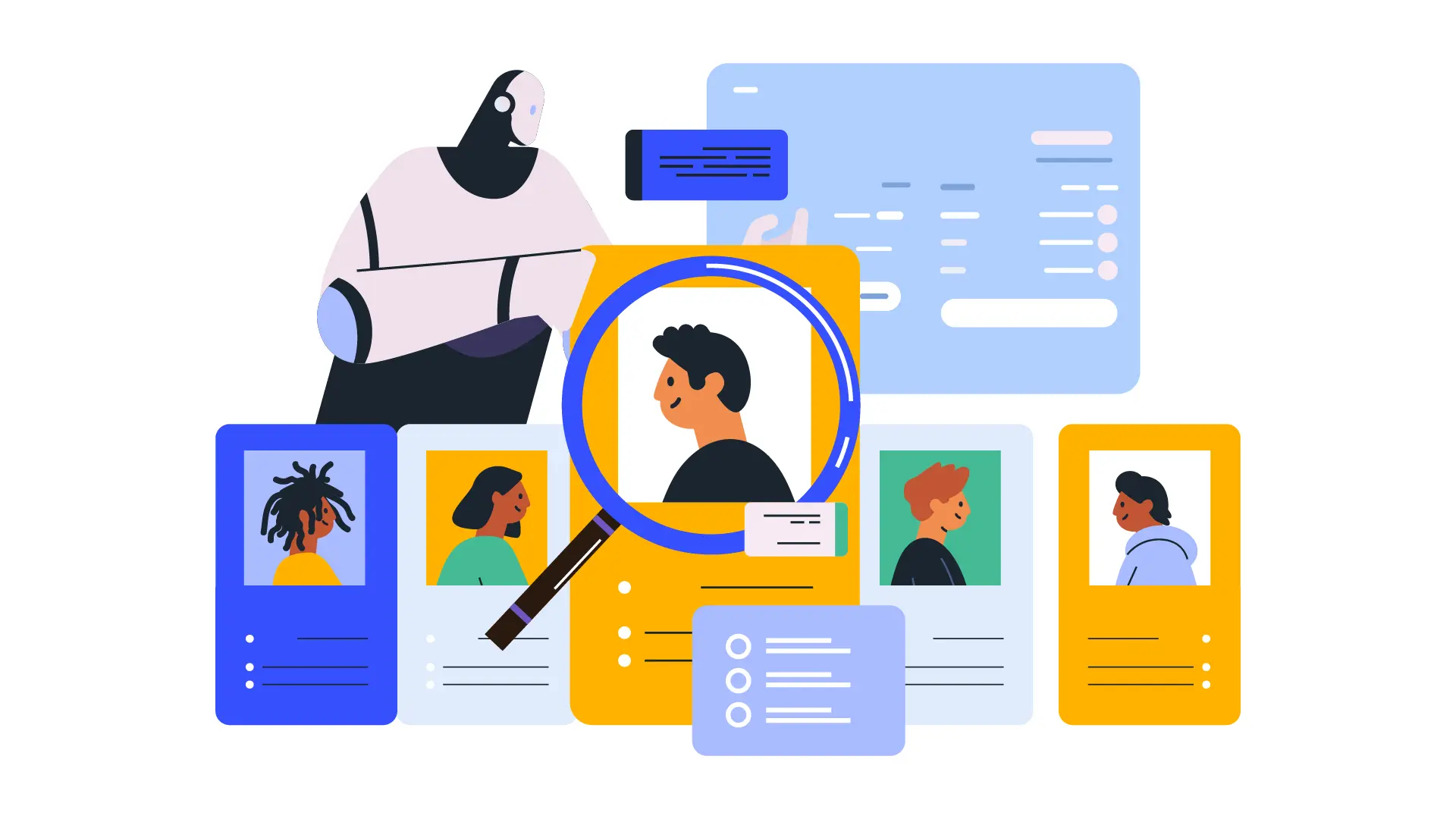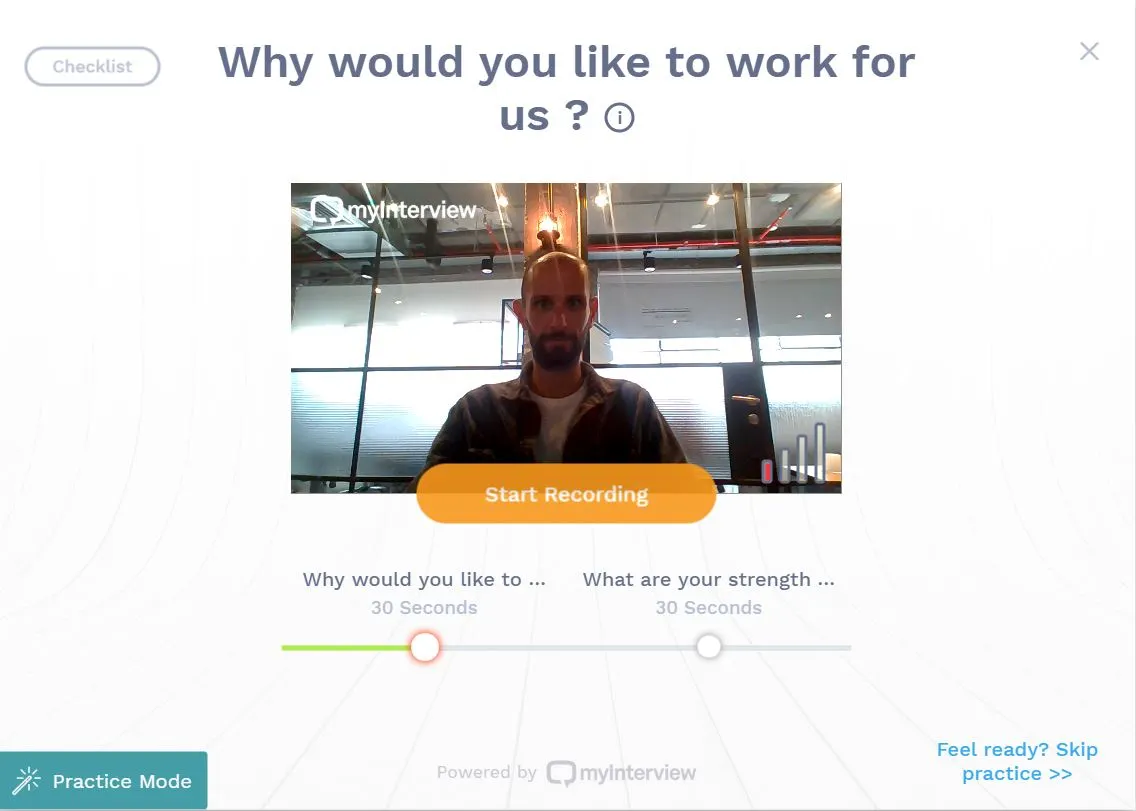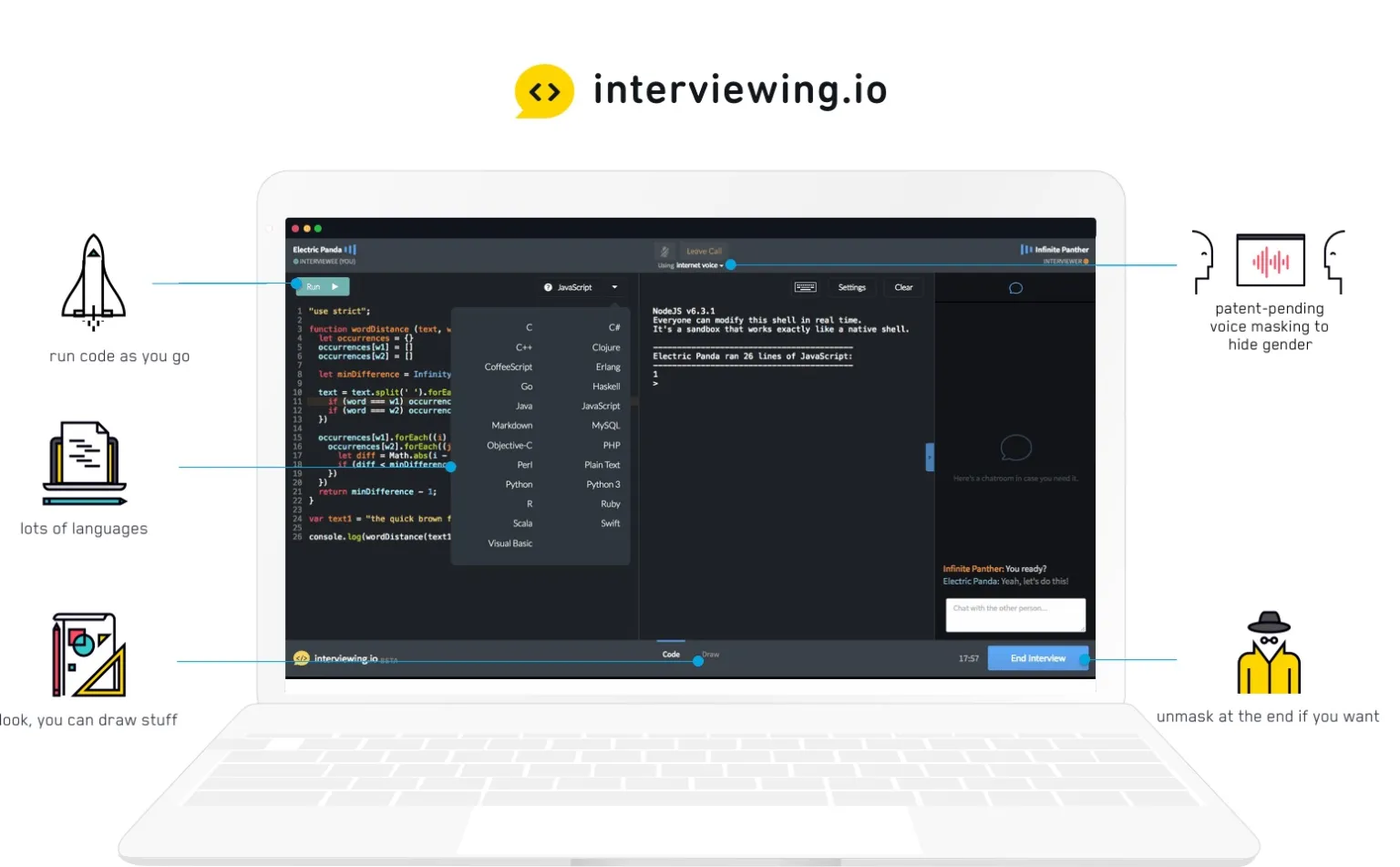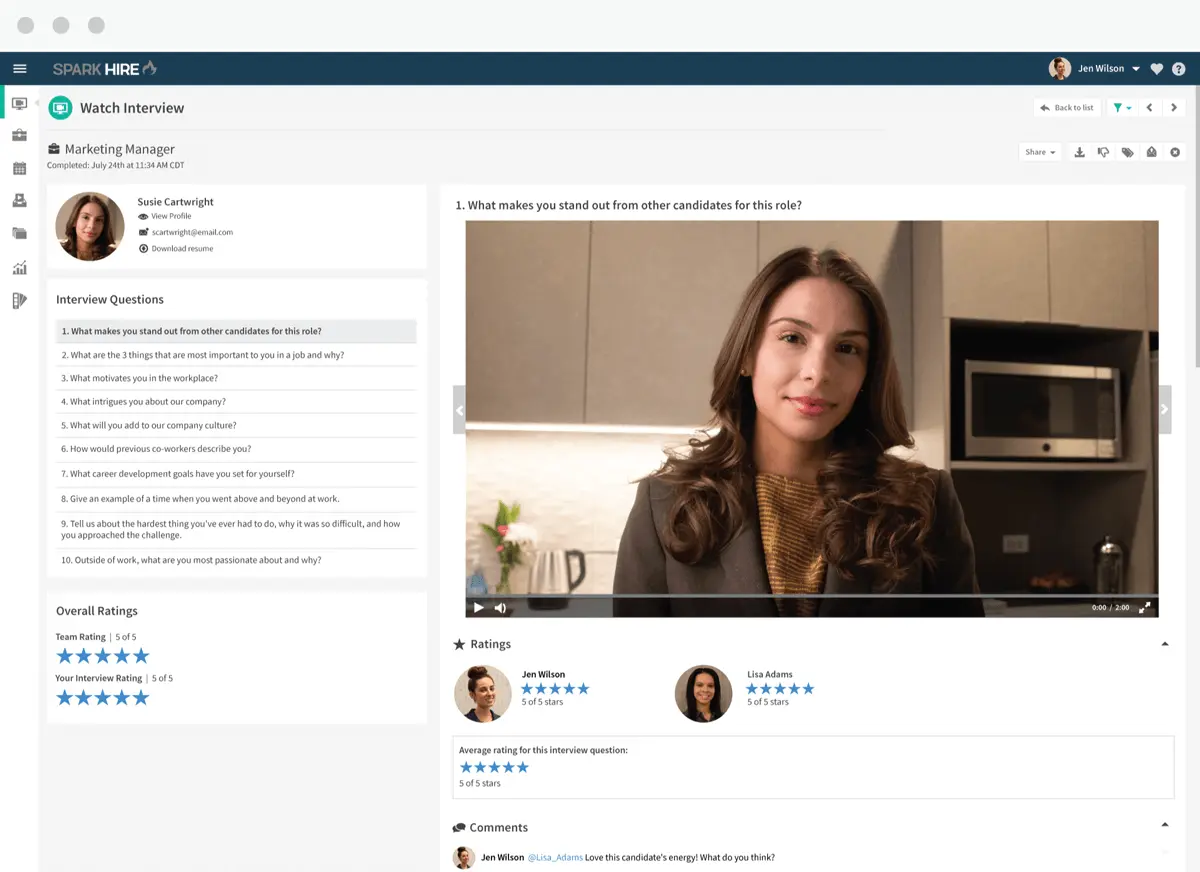
Learn the five most common screening methods, why they matter, and how the right tools help teams hire faster with clearer decisions.

High-volume hiring is tough. Retailers, call centers, hospitality groups, and fast-growing startups often need to bring in hundreds or even thousands of people quickly.
At the same time, recruiters face time pressure, a flood of applicants, and the challenge of keeping candidate quality steady. Manual reviews, constant scheduling, and back-to-back interviews can’t keep up, which ultimately leads to delays, biased results, and missed talent.
New recruiting tech is stepping in to handle the load. AI tools that combine video interviews with automated scoring are changing how companies approach mass hiring. They bring speed without lowering standards, efficiency without bias, and fairness across large applicant pools.
But how exactly do these tools deliver on such big promises, and which platforms are leading?
By using AI recruiting tools that integrate video interviews and scoring, companies can streamline the process. Here are the key benefits:
AI video interviews can cut hiring time by almost half. Many companies report a 40-60% reduction in time-to-hire compared with traditional methods. A startup in Berlin even brought its average time-to-hire down from 27 days to 7 days after switching to AI.
The way it works is simple. Video interview platforms screen resumes automatically and allow candidates to record answers whenever it suits them. Recruiters then receive scored interviews right away, which removes long scheduling gaps and keeps the process moving.
AI systems review skills, experience, and soft skills drawn from video responses. About 85% of companies using AI interview tools say they see more accurate evaluations as a result.
IBM also reported fewer mismatched hires after it began using AI to refine candidate matching with less bias. On top of that, video-based AI screening filters out unqualified applicants early, so recruiters spend their time on candidates who are more likely to succeed.
The financial impact is just as strong. PwC data from 2023 showed companies using AI interviews cut hiring costs by 67%. Other research suggests these tools lower cost-per-hire by about 30% on average.
Asynchronous video interviews also reduce expenses tied to travel and room bookings. That saves money for employers and makes the process easier for candidates too.
One of the most important benefits is fairer treatment for applicants. AI scoring applies the same standards to every candidate, and in one survey 43% of recruiters said these systems help reduce bias in hiring.
Research from Warden AI backs this up. Their study found AI systems scored 0.94 on fairness metrics, compared to 0.67 for human-led hiring. The same research also reported up to 39% fairer treatment for women and 45% fairer treatment for racial minority candidates when AI was used instead of human-only evaluation.
See also: 5 AI Recruiting Software for Singapore Recruiter Productivity 2025
Now that we’ve seen how AI tools speed up hiring, improve candidate quality, lower costs, and reduce bias, it’s time to look at the platforms leading this shift. These solutions are built to handle large applicant volumes while giving recruiters structured data they can trust.
Below are five tools that stand out for combining video interviews with automated scoring in a way that supports fast and fair mass hiring.

Overview:
KitaHQ simplifies early hiring by automating resume screening and structured video interviews in a single platform. Instead of spending weeks reviewing CVs and coordinating schedules, HR teams can rely on AI to manage the routine work and focus only on the most promising candidates.
The system generates tailored interview questions, records candidate responses, and delivers structured reports complete with transcripts, scores, and summaries. This ensures every applicant is evaluated fairly and consistently, making comparisons easier.
For companies facing high-volume or multi-location hiring, KitaHQ scales effortlessly. It runs interviews 24/7 across time zones and equips teams with shareable insights to accelerate confident, data-driven decisions.
Key Features:
Limitation(s): KitaHQ does not provide a free trial option for new users.
Pricing:
Best For:
Businesses of any size that need fair and scalable recruiting. It is especially useful for companies hiring across countries or screening large groups of candidates without adding extra work to HR teams.

Overview:
InCruiter offers a video interview platform built around AI and expert human interviewers. It helps companies speed up hiring, reduce costs, and get structured feedback. Recruiters can use both one-way and two-way video interviews, plus tools for matching candidates to job requirements.
By using it, hiring teams gain access to a large interviewer network, prompt scored evaluations, and simplified communication with candidates. They also get automation of many early interview steps. This means less time spent on scheduling, manual screening, and coordination.
Key Features:
Limitation(s):
Pricing:
InCruiter doesn’t provide fixed rates on its website. Instead, it uses a custom quote model based on factors like team size, number of interviews, and hiring needs. Companies can request a demo or tailored quote to get exact pricing.
Best For:
InCruiter works well for businesses that manage large or fluctuating interview volumes and need structured feedback fast. It suits both startup teams and large enterprises that hire across technical and non-technical roles and want to automate early steps of candidate screening.

Overview:
myInterview is a video interviewing platform that has processed millions of interviews for companies of all sizes. Recruiters can set it up quickly, invite candidates, and start reviewing responses soon after launch. The platform supports custom branding and ATS integrations, which helps teams save time in screening while keeping candidate interactions consistent.
Key Features:
Limitation(s):
Pricing:
myInterview does not publish fixed rates on its website. Companies need to contact the team for a custom quote based on hiring needs.
Best For:
Small and mid-sized companies as well as larger organizations that want scalable video interviewing.
See also: 5 Best Video Interview Software to Scale High-Volume Hiring in Malaysia

Overview:
Interviewing.io is a platform where engineers take mock technical interviews with senior engineers from leading tech companies. These interviews cover coding, system design, and problem solving in an anonymous setting, which gives candidates a chance to show ability without relying on their resume.
For employers, this builds a pool of engineers with proven interview performance and provides structured feedback that helps reduce bias and speed up hiring decisions in technical recruitment.
Key Features:
Limitation(s):
Pricing:
Employers pay only when a candidate meets their technical bar in an interview. This means the cost is tied to candidates who pass a company’s hiring standard.
Best For:
Interviewing.io is best for tech companies that want to hire engineers based on proven interview performance.

Spark Hire is a talent-acquisition platform used by thousands of organizations to evaluate potential hires. It includes video interviews, assessments, reference checks and an integrated applicant tracking system. Recruiters share feedback and align hiring decisions across their teams.
Recruiters using Spark Hire gain access to structured candidate evaluations based on performance in video interviews and assessments. They save time by reducing manual steps and busywork. Their teams stay coordinated with shared dashboards and streamlined workflows.
Key Features:
Limitation(s):
Pricing:
Best For:
Spark Hire is most popular with small to medium-sized businesses but also serves enterprise-level organizations.

Overview:
Paradox is a recruiting platform built around a conversational AI assistant called Olivia. It automates screening, interview scheduling, and candidate communication using chat, SMS, and mobile-friendly workflows. The focus is on handling high volume recruiting while keeping engagement steady and timely.
Recruiters using Paradox gain a system that handles many of the routine tasks that can slow hiring down. They get faster candidate responses, smoother scheduling, and less manual follow up. This frees up time for recruiters to focus on interviewing, candidate experience, and making better hiring decisions.
Key Features:
Limitation(s):
Pricing:
Paradox AI pricing model is based on custom quotes that vary. Contact team for further details.
Best For:
Paradox.ai is best suited for large enterprises and organizations with high-volume, frontline or hourly hiring needs, particularly those in industries like retail, restaurant, healthcare, hospitality, and manufacturing.
See also: 10 Best AI Interview Tools for Reducing Recruitment Costs in Large Organizations
Finding the right platform isn’t just about picking the most popular name. It’s about matching the tool to the scale of your hiring, the type of roles you’re filling, and the experience you want both your recruiters and candidates to have.
If you expect hundreds or thousands of applications, the tool has to keep up without breaking down. Look for platforms that can send bulk invites, run interviews at any hour, and generate reports quickly, like KitaHQ. A proven track record with other high-volume employers is a good sign that the system won’t slow you down.
Different industries need different screening methods. A software firm might want coding tests, while a hotel group may focus on communication and service skills. Choosing a tool built for your type of roles avoids wasted time and irrelevant assessments.
An awkward interview process can push good applicants away. The platform should be easy to access on mobile or desktop and give candidates flexibility to record answers when it suits them. Clear instructions and stable video quality make the experience feel professional and fair.
Budgets vary, and so do pricing models. Some platforms charge by the interview, while others use monthly or annual plans. The right choice is one that gives you the features you’ll actually use without loading you with extras that don’t matter for your hiring goals.
See also: How to Reduce Time-to-Hire: 10 Proven Strategies
AI recruiting tools that combine video interviews with scoring are changing how companies hire at scale. They shorten the time to hire, improve candidate matches, and cut costs without lowering standards. They also bring more fairness by applying the same measures to every applicant.
KitaHQ simplifies hiring by automating scheduling (it can send bulk invites), running structured video interviews, and giving recruiters clear scoring reports. It helps teams compare candidates quickly and make decisions with more confidence.
Most importantly, it stays reliable when applicant numbers surge. That makes it a strong choice for companies that need to manage large hiring pools.
Book a demo to see how KitaHQ supports your high volume hiring with structured video interviews and automated scoring.